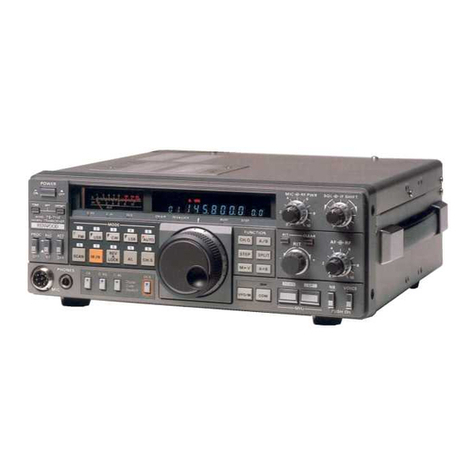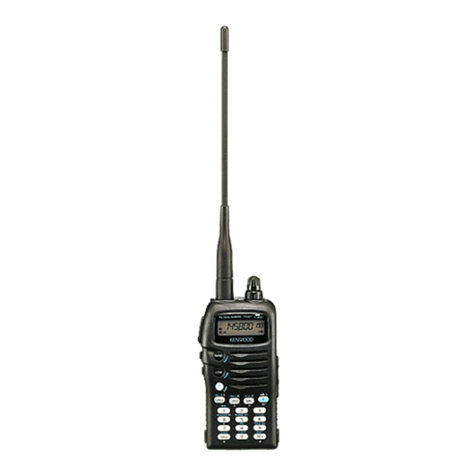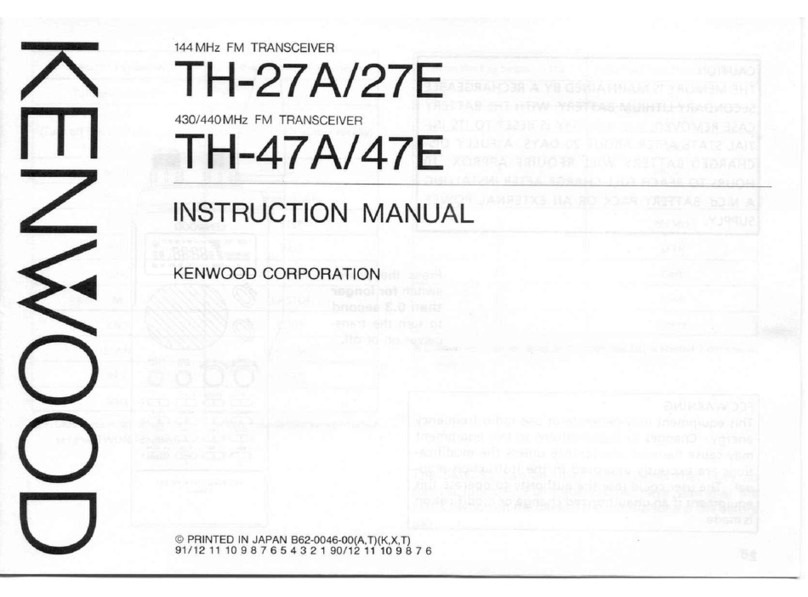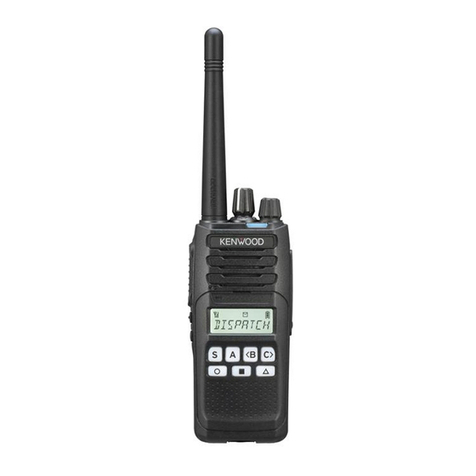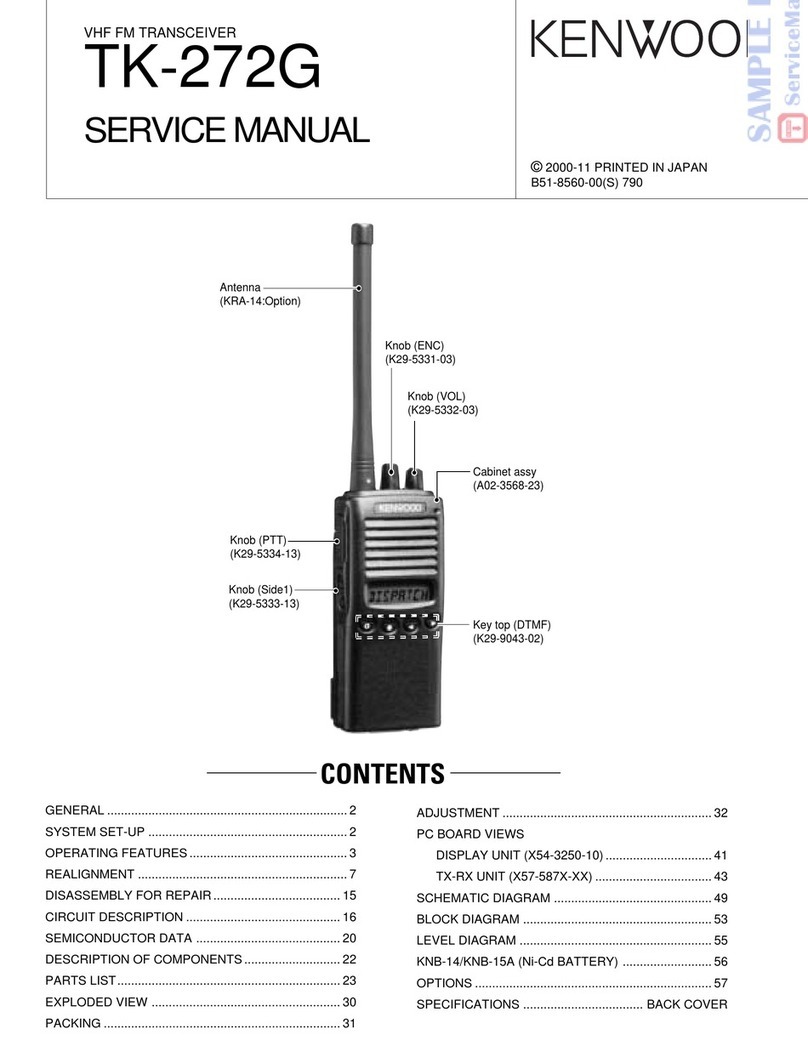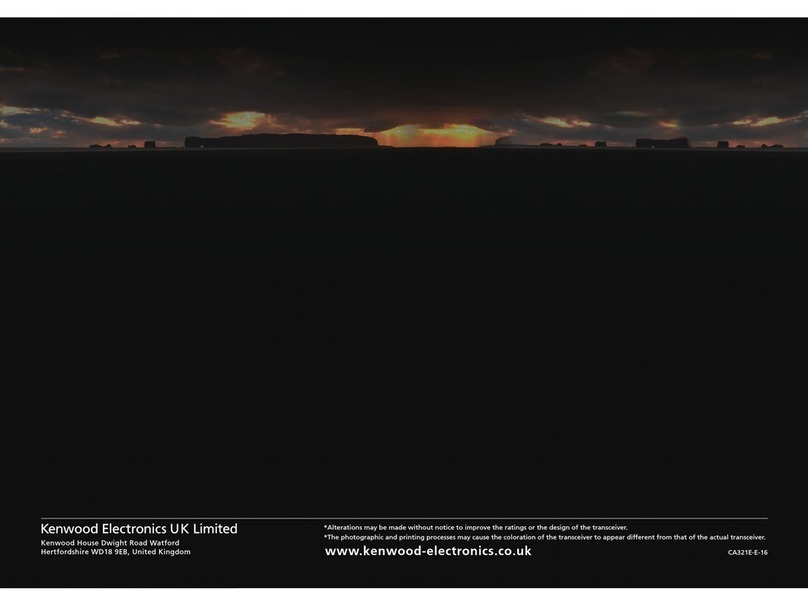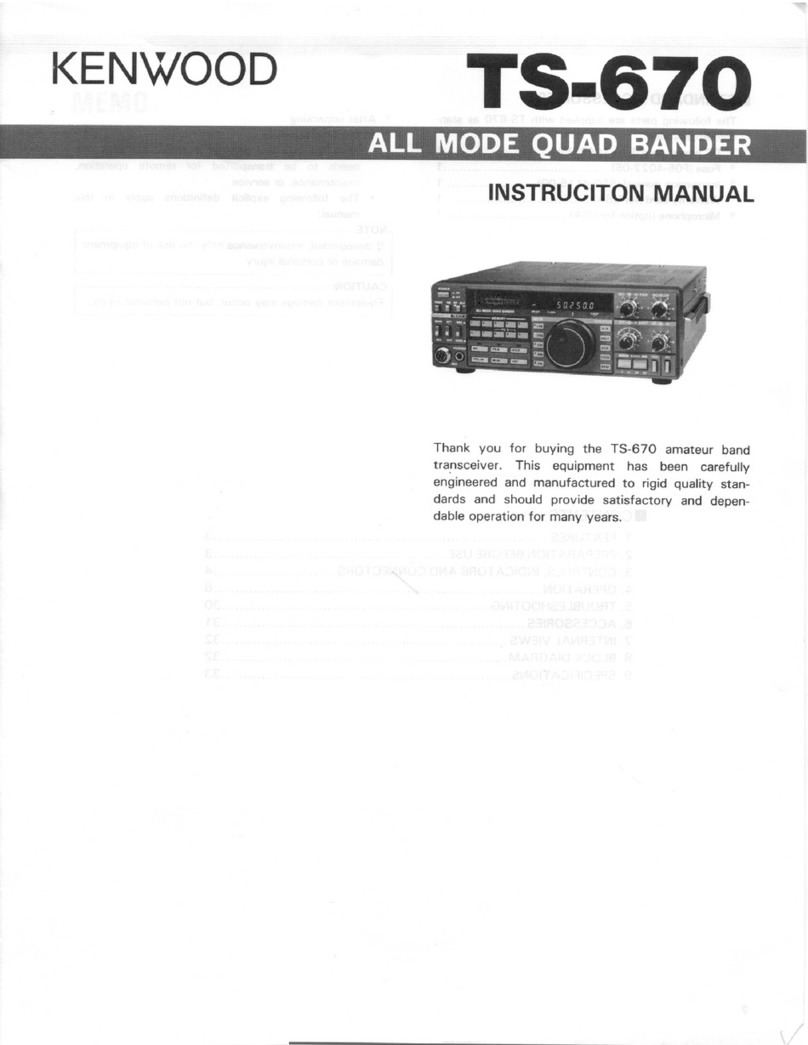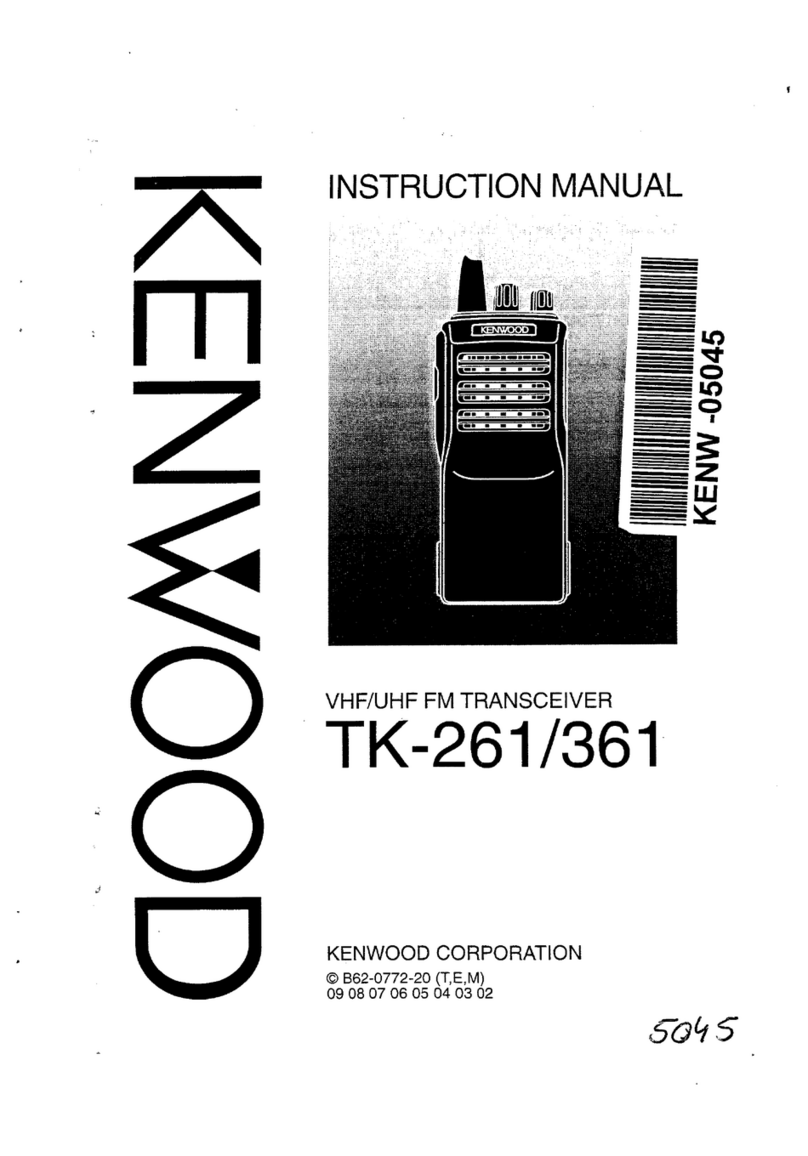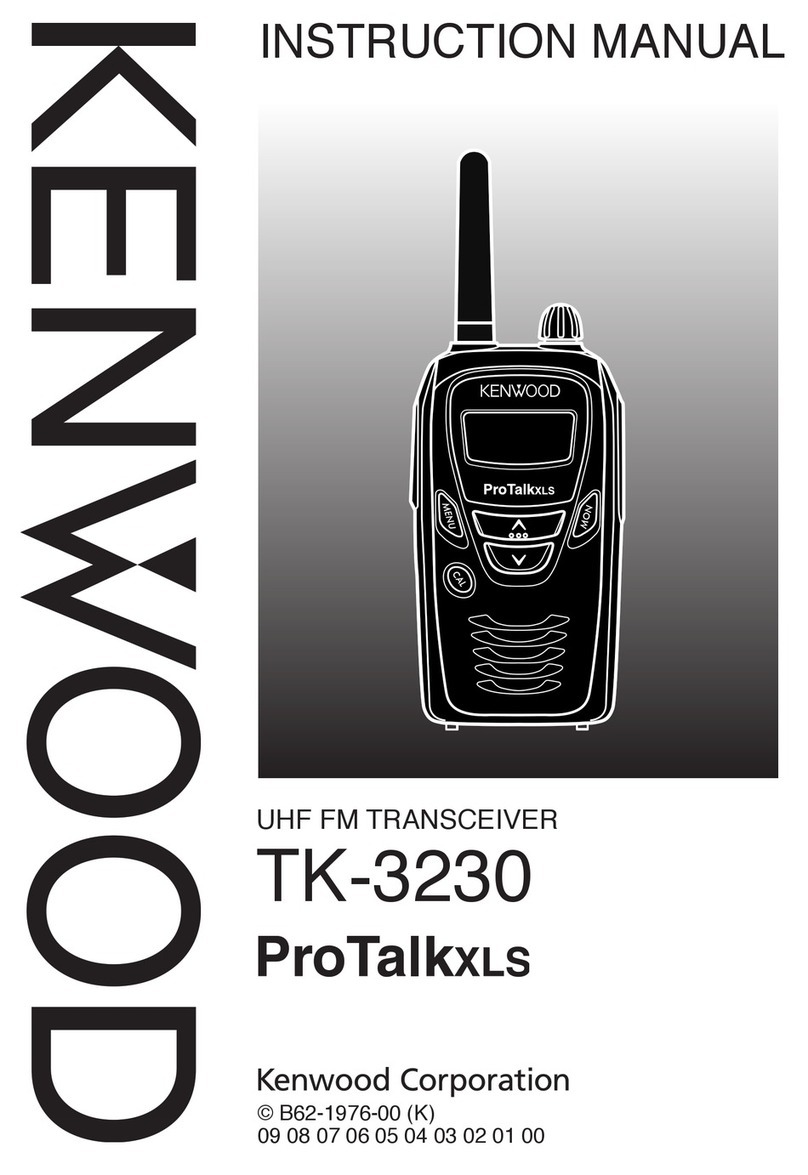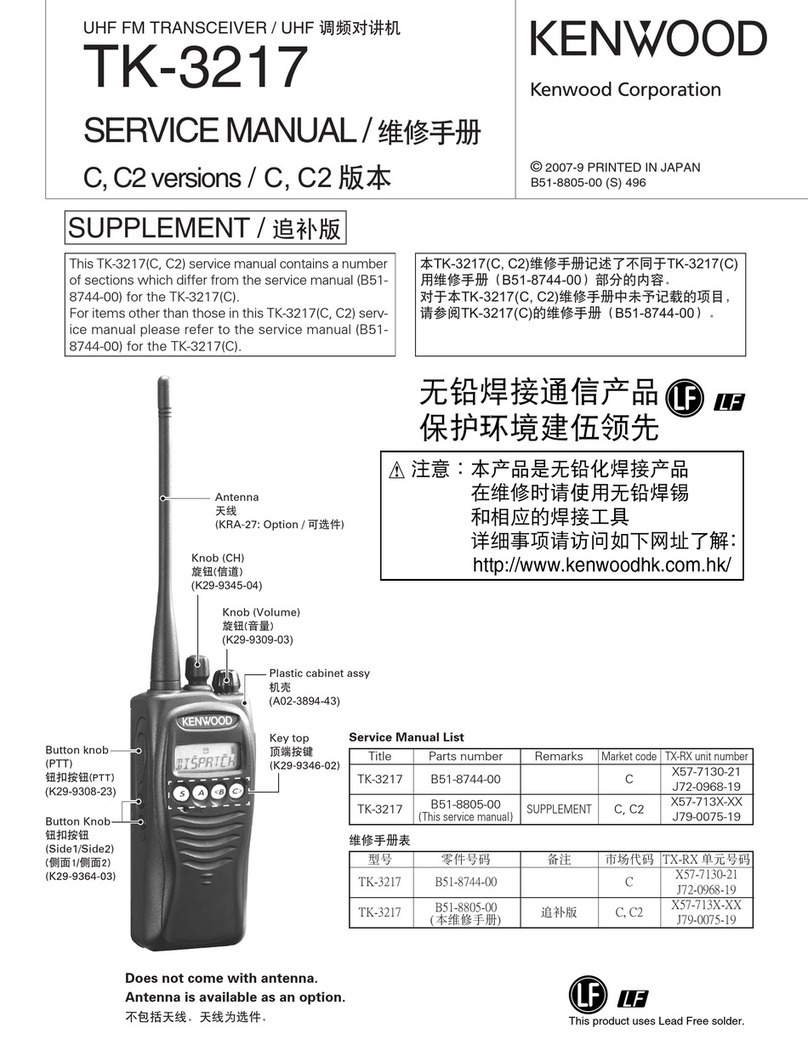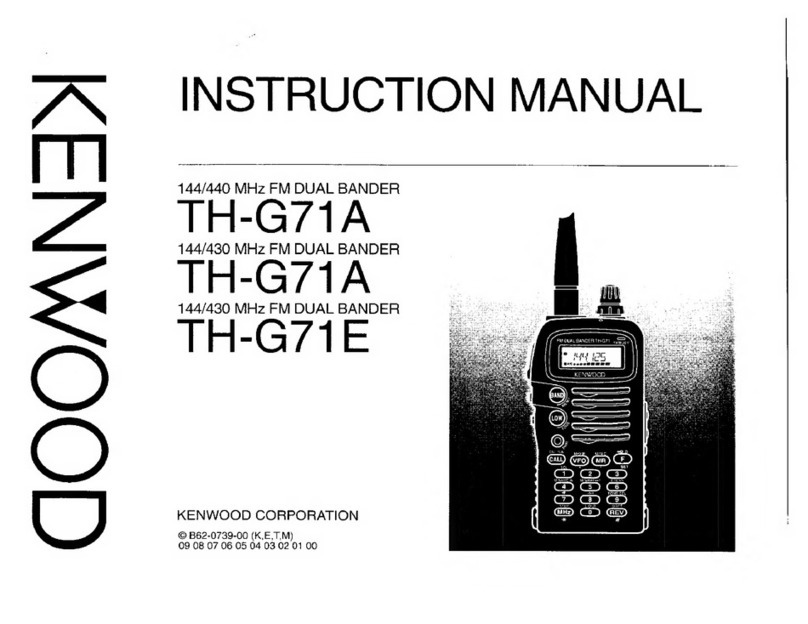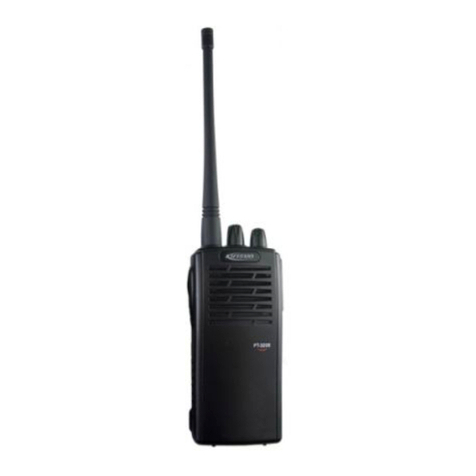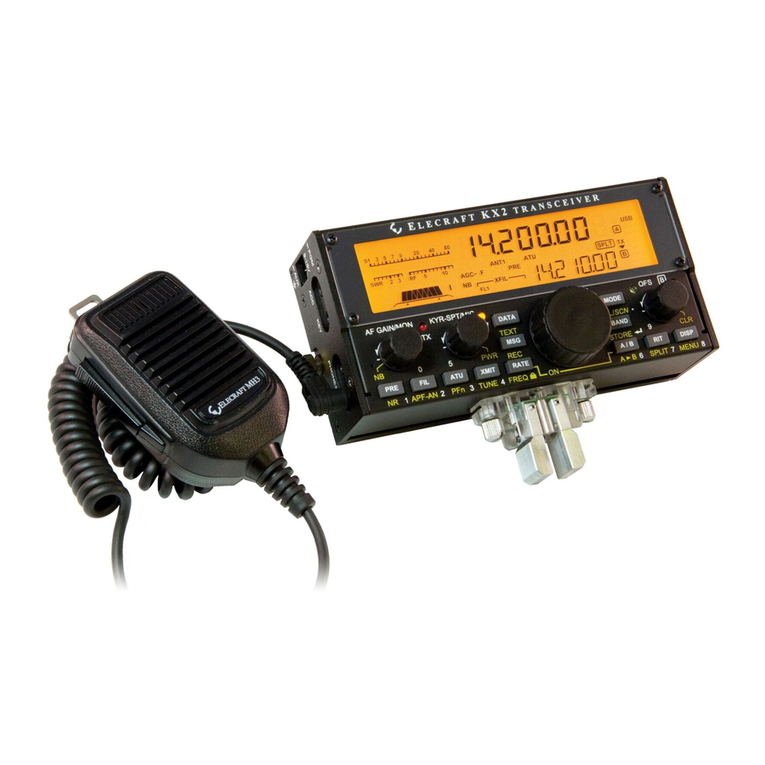
SECTION
3.
get
taeetn
ev
oetg
daa,
3.1
UNPACKING
Remove
the
TS-930S
from
its
shipping
container
and
packing
material
and
examine
it
for
visible
damage.
If
the
equipment
has
been
damaged
in
shipment,
notify
the
transportation
company
immediately.
Save
the
boxes
and
packing
material
for
future
shipping.
The
following
accessories
should
be
included
with
the
_
transceiver.
1.
Instruction
Manual
(B50-3959-20)
........esees
4
2.
Speaker
Plug
1/8”
(E12-0001-05)
........eseeeeee
1
3.
7
Pin
DIN
Plug
(EO7-0751-05)
.........ccccseeeseeseees
1:
4.
Fuse
(6A)
(FO5-6021-05)
or
(4A)
(FO5-4022-05)
....ccsccscseccecesseeeseesnees
1
5.
Power
Cable
........ccccncncececccecnscesceecceceseaseneeesse
1
3.2
OPERATING
PRECAUTIONS:
READ
BEFORE
OPERATING
It
is
suggested
you
read
this
instruction
manual
carefully
before
attempting
operation
with
your
new
TS-930S,
and
that
you
follow
the
suggested
operating
procedures.
Especially
note
that
the
final
amplifier
power
transistors
might
be
damaged
during
transmission
if
the
transceiver
is
operated
into
an
improper
load.
Observe
the
following
transmitter
precautions:
1.
If
the
built-in
antenna
tuner
is
used,
operate
only
after
automatic
tuning
is
completed,
tuning
must
be
perform-
ed
with
the
MODE
switch
at
the
TUNE
position.
2.
Use
only
a
resonant,
50
©
antenna
which
is
adjusted
for
an
SWR
of
1.5
or
less.
3.
DO
NOT
transmit
without
an
Antenna
or
Dummy
Load.
3.3
OPERATING
LOCATION
As
with
any
solid
state
electronic
equipment,
the
TS-930S
should
be
kept
from
extremes
of
heat
and
humidity.
Choose
an
operating
location
that
is
dry
and
cool,
and
avoid
operating
the
transceiver
in
direct
sunlight.
Also,
allow
at
least
3
inches
clearance
between
the
back
of
the
equipment
to
any
object.
This
space
allows
an
adequate
air
flow
from
the
ventilating
fans
to
keep
the
transceiver
cool.
CAUTION:
Do
not
operate
the
radio
in
an
RF
Field
ie
than
6
V
PF.
Receiver
damage
may
occur.
;
3.4
CABLING
(See
Figure
3-2.)
m@
GROUND
To
prevent
electric
shock,
and
reduce
the
possibility
of
TV!
and
BCI,
connect
the
transceiver
to
a
good
earth
ground,
through
as
short
and
heavy
a
lead
as
possible.
Use
ground
rods
or
metal
cold
water
feedline.
aneavoctagavceghtuvectttdoneuustovatattvestansnscasasoccabateeengasyoctsnasscuetdace4nusy=<catnne-<44soeeQhUesecegutacabiOuoesth4tn-ct
ant
T1H12e€H9
Dec
BONsecdLaeets
MM vo
eaEEtye
HUA
oA
LAED
SEND
CHL
ED
PH
CLELS
HoeENDD
ERED
NERA
CITES
A
LEA
oeNUEEv
oC
HNN
S~LAEDOONTEOED=MHEDNoQSUM
e
CETL
Le
oC
URN
NoAEEEDD
oC
MEUEDSCHTELSOPRDBDUDEEDN
CEERI,
INSTALLATION
eautnvecssnneananuoeesuotsceaueevscdtsavansnss
cSuasneot1soa14ancceautacensgsy-<uugtesetUti>otfaubooengttvecQ4MUace
Usb
sooeannayedUUE
eet
Aas
-<tUHtaesBUUT
cE
EsoeAEN
vot
MUU
TDo
UE
aeAtEEL
et
EbreUUU
PH
CBUEL
eC
BLEU
DC
KLEL
Do
ATMNLT
<CUEUEQ
ASAD
9
oAE
LUDO
QBD
De
ORI
oe
aHANTDARDAAD€91GRvo<NREREoG
HAA
THOADEH
bec
EA
LGD
AGL
ANoCHN
ROAM
aLOGEI
Tee
NOTE:
A
ground
connection
greater
than
4/4
away
‘from
the
transceiver
may
be
a
good
DC
ground,
but
NOT
an
RF.
Ground.
|
M
ANTENNA.
Connect
through
a
50
ohm
antenna
feedline
to
the
coaidal
connector
on
the
rear
panel.
M@
KEY
lf
CW
operation
is
desired,
connect
t
a
key
to
the
KEY
jack.
Use
shielded:
line
or
coaxial
cable.
POWER
CONNECTIONS
ee
Make
sure
the:
POWER
switch
on
the
front
panel
is
turned
off,
the
stand-by
switch
is
in
the
REC
position,
the
VOX
is
off,
and
the
line
voltage
is
correct.
Then
connect
the
power.
cord
to
the
line
source.
H
AC
POWER
For
fixed
station
operation,
the
TS-930S
is
supplied
to
operate
from
a
120
V
AC,
220
VAC
or
240
VAC
50/
60
Hz
power
source
capable
of
supplying
510
watts
or
more.
For
units
shipped
to
the
U.S.A.,
the
switch
is
set
at
120
with
a
6-ampere
fuse
installed.
For
units
shipped
to
the
European,
Central
and
South
American,
and
African
countries,
the
switch
is
set
at
220
with
a
4-ampere
fuse
installed.
For
units
shipped
to
the
Oceanian
countries,
the
switch
is
set
at
240
with
a
4-ampere
fuse
installed.
BOTTOM
view
Set
to
your
line
voltage
.
For
AC
120
volts
ee
Ces,
For
AC
220~240
volts
—
Fig.
3-1B
Fuse
replacement
_

